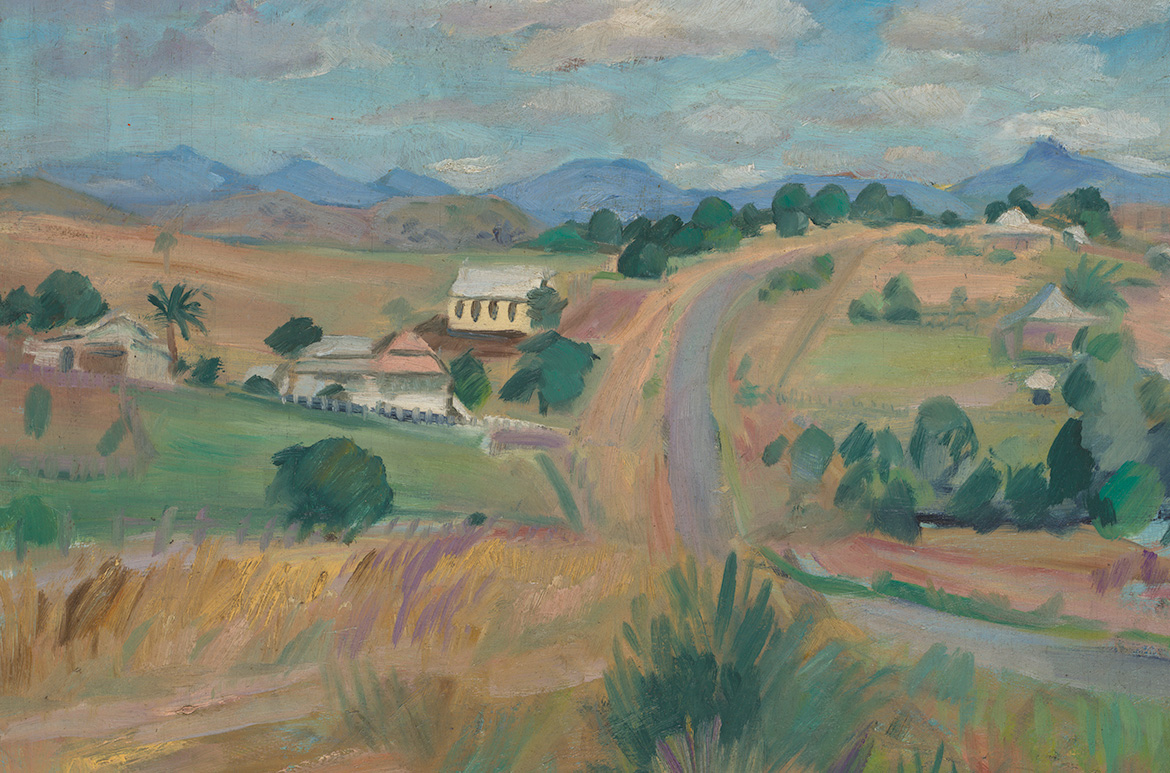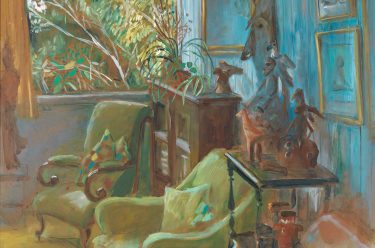Margaret Olley (1923-2011) was deeply grateful when in 1962 her close friend, poet and art critic Pam Bell (1928-1995) invited Olley to visit her family home at Aroo station in Boonah (illustrated), just west of Ipswich near Brisbane. It provided Olley with new subject matter for a number of regional landscapes and homestead portraits, not having a drivers license Olley relied on others for transport, consequently her subject matter was usually limited to still-life and interior paintings.
Aroo Station
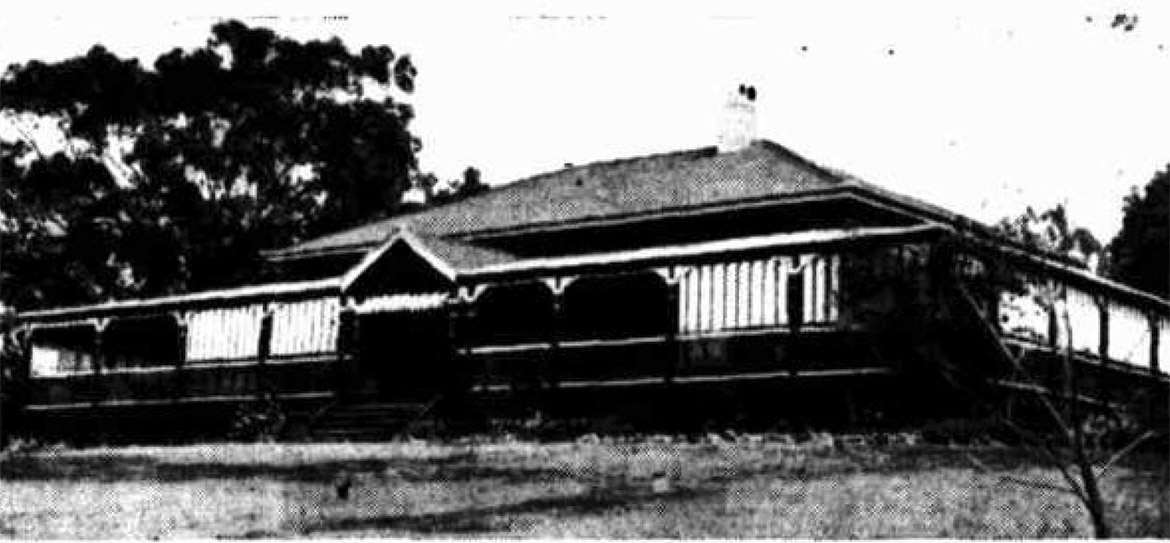
Boonah landscape
Boonah landscape 1962 (illustrated) was inspired by the view of Roadvale and the distant McPherson Range which Olley took in as she travelled along the road to Aroo. There is an intense relationship created between the colours of the hot sun and red volcanic earth with the cooler tones of the grass in the foreground and fields either side of road that sweeps towards the distant mountains.
RELATED: MARGARET OLLEY
DELVE DEEPER: KNOW BRISBANE through the QAGOMA Collection
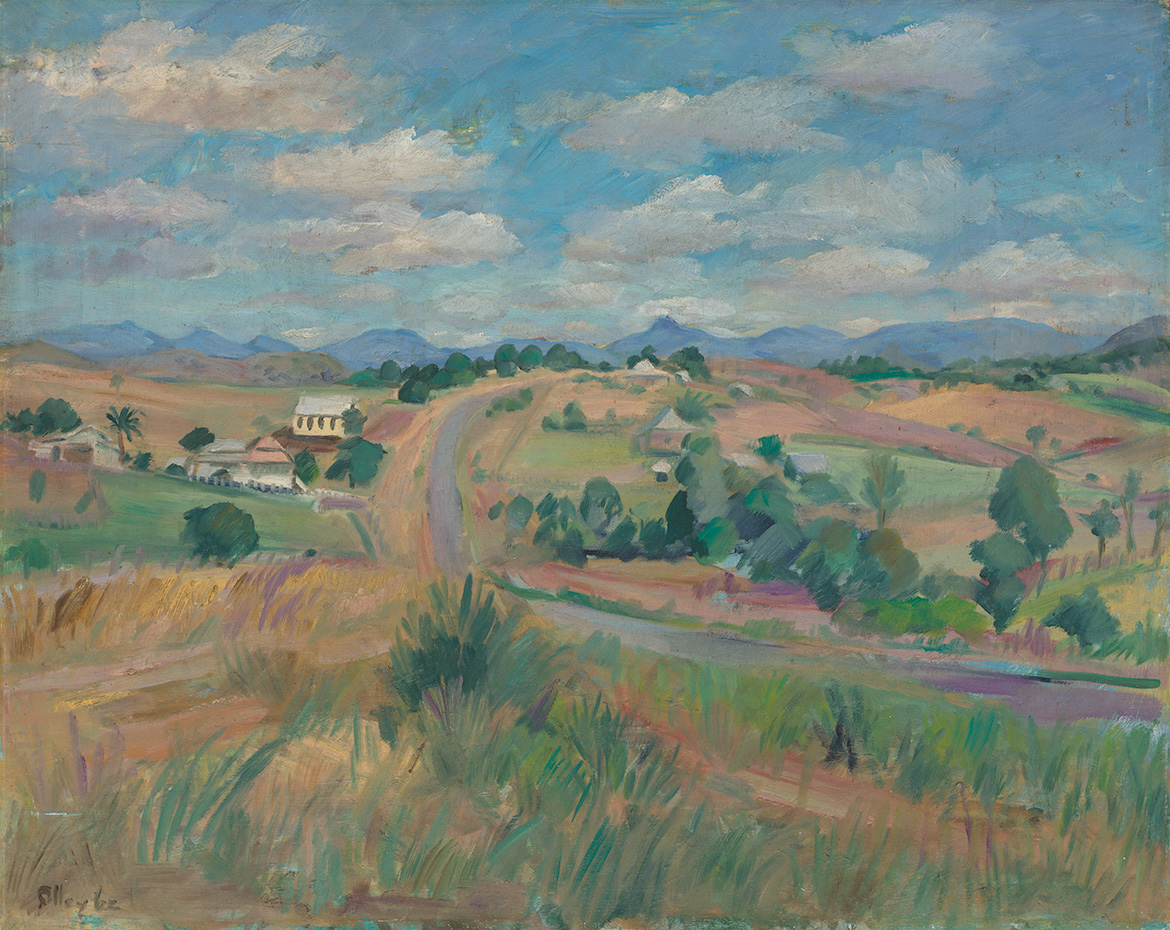
View from the opposite direction
A closer view of the weatherboard Queenslanders and church in the distance captured in Olley’s painting can be seen in a c.1930 photograph of Milbong Lutheran Church (formally known as St Luke’s) and cemetery on Ipswich-Boonah Road from the opposite direction where her landscape was painted. Built in 1885, the church building was demolished in 1974 after it ceased being used as a church and was rebuilt as a house, the cemetery attached to the church remains today.
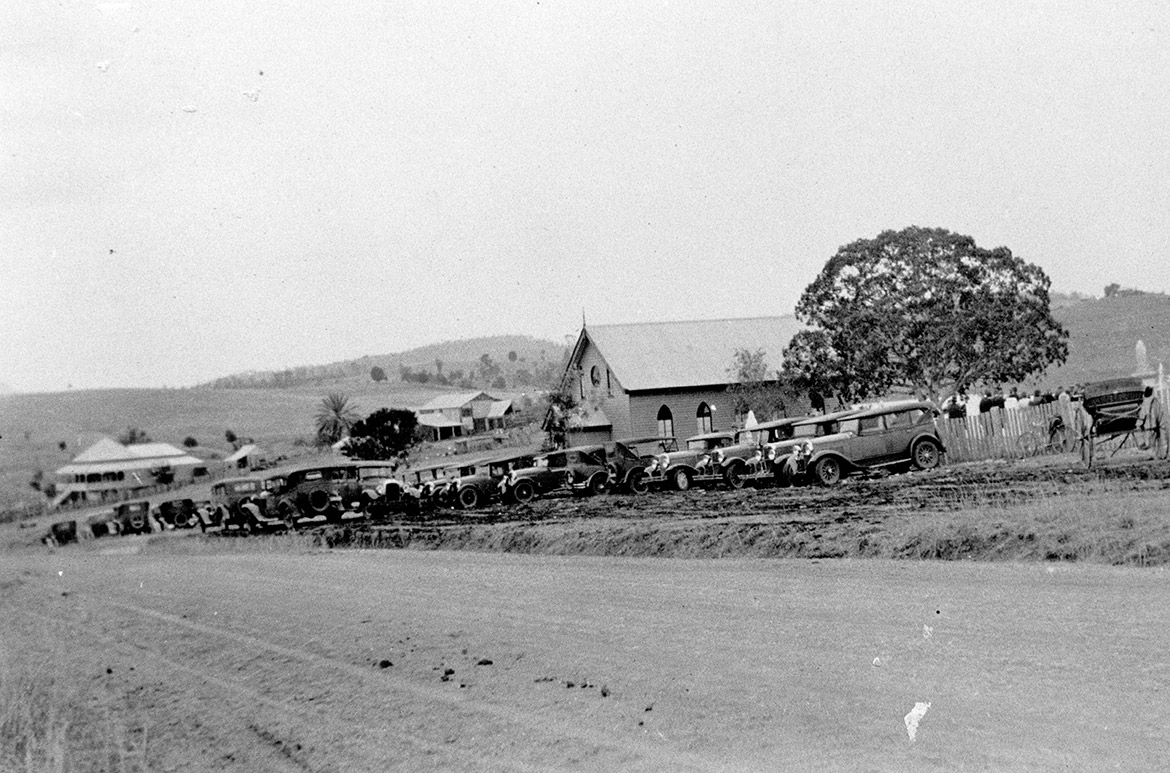
The site of Boonah landscape today
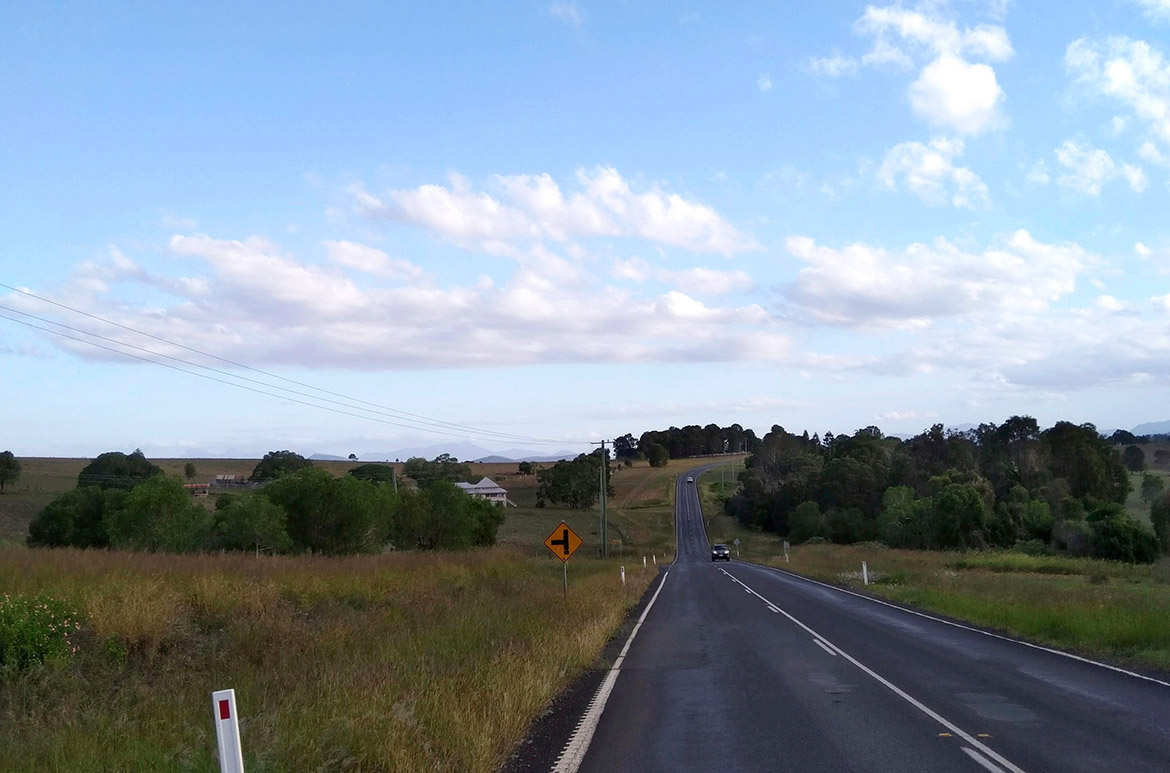

Pam Bell
Olley’s portrait of Pam Bell (illustrated) won the 1962 Helena Rubinstein Portrait Prize (disbanded 2011) awarded for works by Australian artists, before being exhibited in the Archibald Prize that year. The oil on canvas was later destroyed in the fire at her family home ‘Farndon’ at 15 Morry Street, Hill End (now West End) in 1980 together with the loss of many of Olley’s early works, photographs, and objects from her travels.
DELVE DEEPER: MARGARET OLLEY AND PAM BELL

Margaret Olley and Pam Bell

Pam Bell’s father Major Bertram Charles Bell (1893-1941) was a well-known Queensland pastoralist and son of James Thomas Marsh Bell (1839–1903) and Gertrude Augusta Bell, a prominent family from Coochin Coochin, (illustrated) a 22,000-acre (8903 ha) property near Boonah, one of the oldest pastoral homesteads in Queensland’s Scenic Rim, recorded by Conrad Martens also in the Gallery’s Collection. Martens stayed at Coochin Coochin for nine days in November 1851 when it was occupied by George Fairholme, a pioneer settler, Bell purchased the property in 1883 and the homestead is still owned by the family today. Martens sketched remarkably accurate topographical outlines of the mountains in the area and the nearby Great Dividing Range and the McPherson Range which Olley would paint some 100 years later with Boonah landscape.
Edited extracts by Michael Hawker, Curator, Australian Art (to 1980). Additional research and supplementary material by Elliott Murray, Senior Digital Marketing Officer with support from the QAGOMA Research Library.
Views around Coochin Coochin station

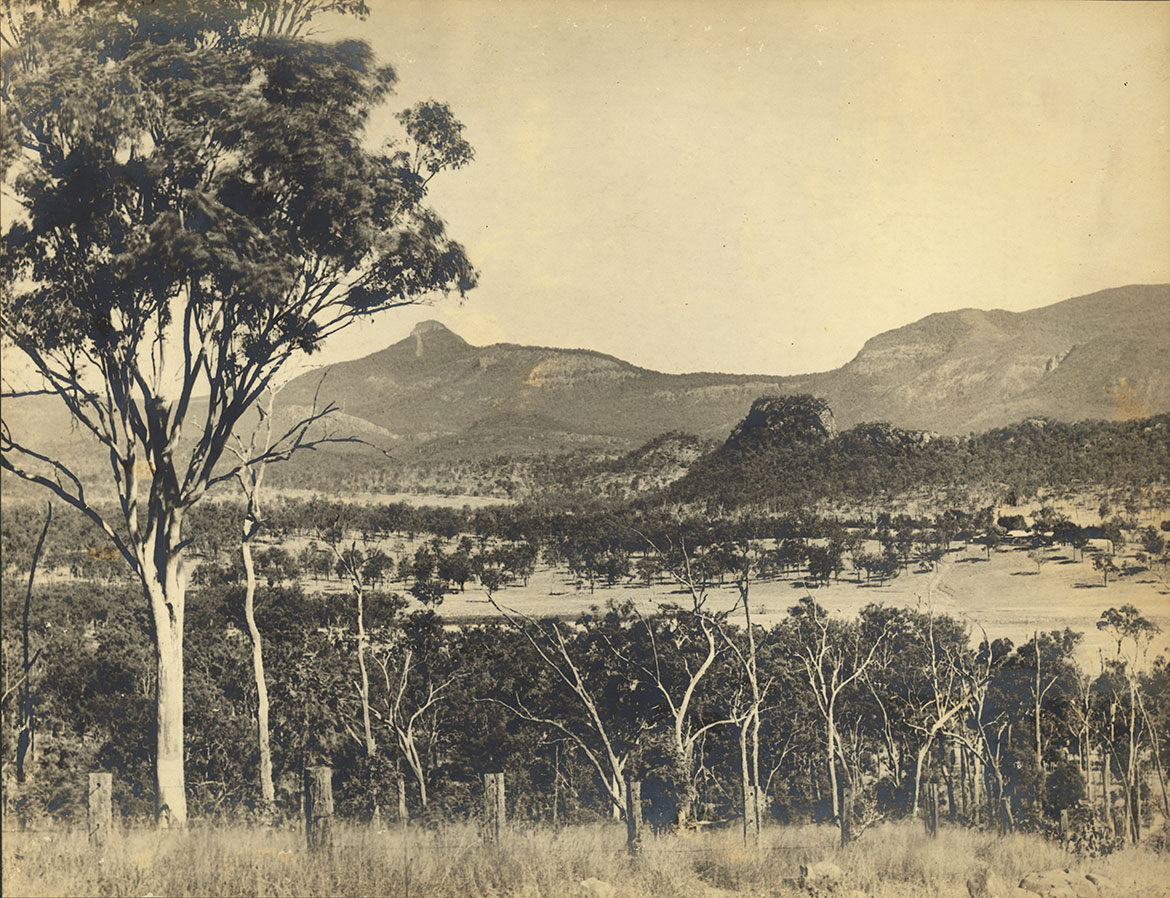
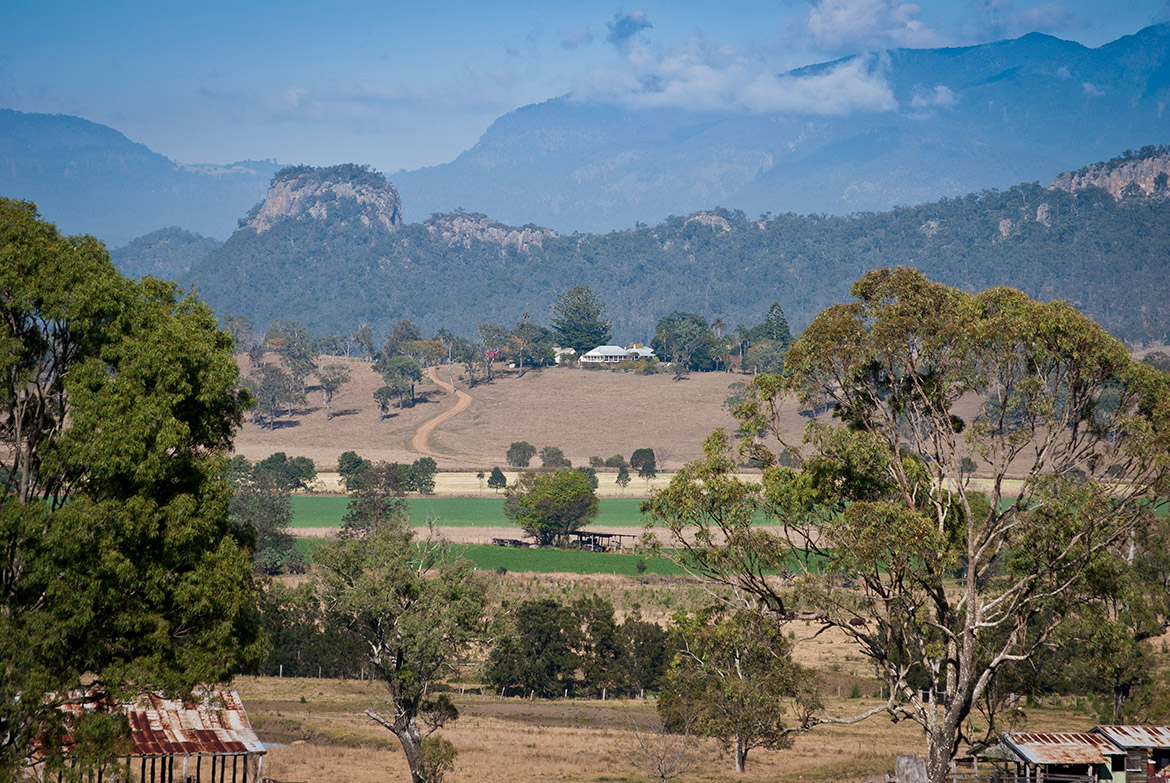
Know Brisbane through the QAGOMA Collection / Delve into our Queensland Stories / Read more about Australian Art / Subscribe to QAGOMA YouTube to go behind-the-scenes
Featured image detail: Margaret Olley Boonah landscape 1962
#MargaretOlley #QAGOMA
